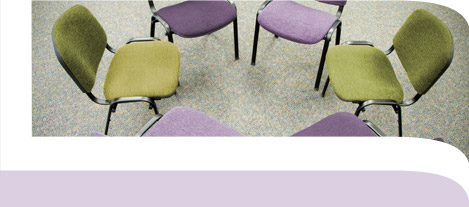community youth justice (CYJP)
what is the community youth justice program?
Based on restorative justice principles, the CYJP provides a viable and effective alternative to the court system for offences committed by youth. We used trained facilitators and a resolution conference approach to involve all parties in processes to 'right the wrong'. We accept referrals from both police and Crown on matters relating to youth offences.
who is eligible for referral to the CYJP?
- Youth under age 18 who have been accused of involvement in a criminal offence in the Tri-Cities area and New Westminster.
- Referrals are made on a case-by-case basis at the discretion of the investigating police officer or Crown. Youth with prior criminal records are also eligible for referral.
- The accused must be willing to accept responsibility for the offence and participate in a restorative process
- Participation of persons harmed (victims) is important, but entirely voluntary.
- Youth always have the right to choose to have their case proceed through the court system, instead of going through the CYJP.
what types of offences may be referred to the CYJP?
Typical offences that are referred to the CYJP are theft, possession of stolen property; mischief, break and enter, assault, robbery, taking a motor vehicle without consent, etc. Cases are referred at the discretion of the referring police agency or Crown Council.
If you are the victim, parent or youth directly involved in a criminal incident, and would like to explore a restorative alternative to the youth criminal justice system, you might mention this to the police officer in charge of your case.
While the decision rests exclusively with the investigating officer, your willingness to utilize our program might be an important consideration.
what is a resolution conference?
A resolution conference is a meeting in which two co-facilitators involve the accused youth, the person(s) harmed, their families and supporters in a circle-shaped forum. The conference is an opportunity for all parties to discuss the conflict, share their experiences of the impact of this incident, and repair the harm caused. A restorative justice process typically involves the use of a resolution conference. However, because restorative justice is a philosophy, processes are flexible to meet the needs of the participants. Ultimately, the intent is to address everyone's needs so that all can move on.
- Parties are supported in reaching a mutually satisfactory agreement as to how to repair the harm, which the facilitators formalize in writing.
- The Youth is supported in completing his/her agreement.
If the accused youth does not complete the requirements of the conference agreement, the case will be closed as incomplete by CERA and will be returned to the referring agency for appropriate action.
victim benefits:
The victim has the opportunity to:
- Express to the youth the personal impact of the incident:
- Direct questions to the youth pertaining to the incident, to gain a better understanding;
- Experience the youth acknowledging responsibility for the incident;
- Ask for or receive an apology;
- Participate equally in the process of determining appropriate reparation;
- Obtain resolution and closure.
youth benefits:
The youth has the opportunity to:
- Become aware of how the incident affected the victim and others;
- Apologize to the victim and accept responsibility for the incident;
- Participate equally in developing a fair and reasonable agreement;
- Work toward (re)gaining the respect of those affected by repairing the harm and making things right;
- Reconnect to family and reintegrate into community;
- Receive help for voiced concerns and referrals to community resources;
- Avoid lengthy court process and criminal record.
community benefits:
For the community, the program provides:
- An alternative to the court process that is more expedient and cost efficient;
- Increased confidence in the methods and likelihood of preventing future re-offending;
- An opportunity for community involvement and training in mediation and conflict resolution;
- Increased community satisfaction with youth justice;
- A safer community and a healthier future for victims, youth and community members.



